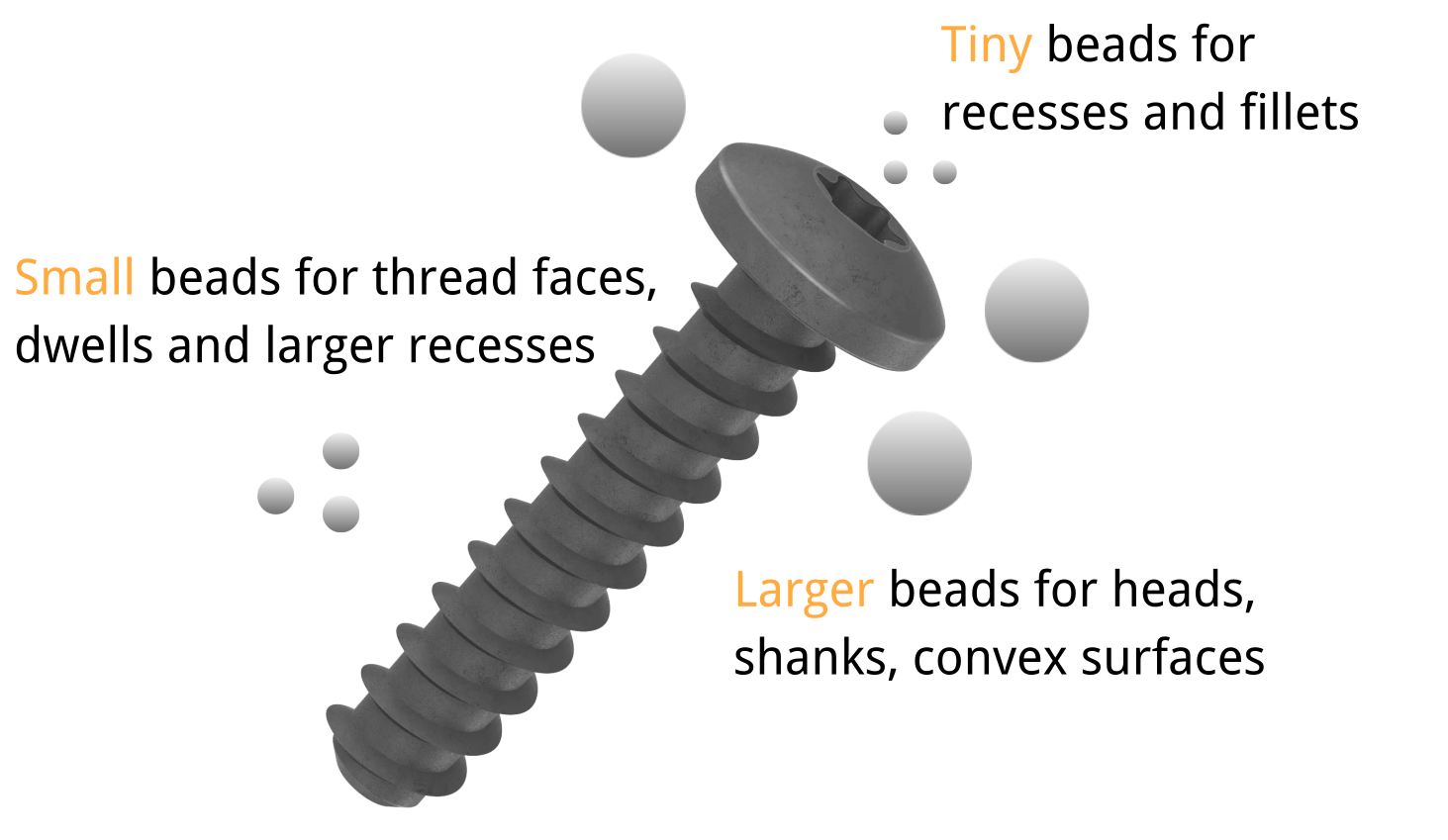The plating barrel is loaded with an mixture of different bead sizes that is optimized for the particular geaometry and features of the working parts.
The bead mixture used in the mechanical galvanization process can have a significant impact on the quality of the galvanized surface coating. The beads are typically made from a high-strength, heat-resistant glass material, and are used to provide a consistent and uniform coating on the fastener surface.
The glass beads play a number of important roles in the galvanization process. First and foremost, they provide the necessary abrasion to remove any contaminants or impurities from the surface of the fastener. This is important because contaminants can reduce the adhesion and performance of the coating, and can cause the coating to fail prematurely.
The glass beads also help to distribute the coating material evenly across the surface of the fastener. This is important because a uniform coating is essential for ensuring the performance and reliability of the fastener. The beads are carefully sized and shaped to provide the right level of abrasion and coverage, and are carefully mixed with the coating material to ensure a consistent and uniform coating.
Finally, the glass beads can also affect the appearance of the coating. The size and shape of the beads, as well as the color and transparency of the coating material, can all impact the final appearance of the galvanized coating. By carefully selecting the right glass bead mixture, we can produce a galvanized coating that has the desired appearance and performance characteristics.
Overall, the glass bead mixture used in the mechanical galvanization process plays a critical role in ensuring the quality of the galvanized coating. By carefully selecting the right beads and controlling the process, we can produce a high-quality coating that provides superior performance and long-term value for our customers.
